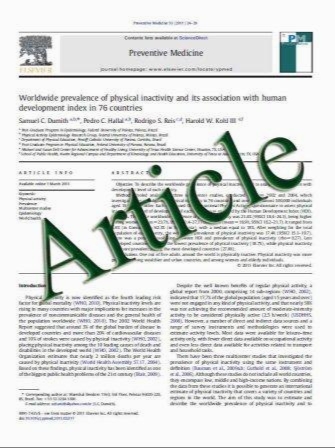The CYP17A1 234T > C polymorphism and breast cancer risk in BRCA1 and BRCA2 mutation carriers
- نوع فایل : کتاب
- زبان : انگلیسی
- مؤلف : Bella Kaufman Yael Laitman Elad Ziv Ute Hamann Diana Torres Ephrat Levy Lahad Rachel Beeri Paul Renbaum Anna Jakubowska Jan Lubinsk
- چاپ و سال / کشور: 2010
Description
Exposure to estrogen has a major effect on breast cancer risk. A polymorphism (-34 T[C; rs743572) in the cytochrome P450c17alpha gene (CYP17A1) encoding an enzyme which controls estrogen levels was reportedly associated with breast cancer risk in average risk populations. The effect of this polymorphism on breast or ovarian cancer risk for BRCA1 and BRCA2 mutation carriers has not been thoroughly investigated. With this aim, 2,221 BRCA1 and BRCA2 mutation carriers (1,313 with breast cancer, 279 with ovarian cancer, and 695 asymptomatic carriers), with either BRCA1 (n = 1693) or BRCA2 (n = 528) germline mutations from seven centers were genotyped for the -34 T[C CYP17 polymorphism. Genotyping was accomplished using Taqman allelic discrimination, matrix-assisted laser desorption/ionization time-of-flight mass spectrometry (MALDI-TOF MS) or PCR-based restriction-fragment length polymorphism analysis, and limited sequencing. Data were analyzed using Cox proportional hazards models. The hazard ratios (HRs) for breast cancer was 1.02 (95% CI 0.89–1.17, p = 0.74) and 1.10 (95% CI 0.72–1.67, p = 0.66) for BRCA1 and BRCA2 mutation carriers, respectively. The HRs for ovarian cancer were 1.17 (0.94–1.46, p = 0.17) and 0.91 (0.31–2.67, p = 0.86) for BRCA1 and BRCA2 mutation carriers, respectively. Results remained unaltered when the Israeli cohort (primarily Ashkenazim) was evaluated separately. In conclusion, there was no overall evidence for an association of the -34 T[C CYP17 polymorphism with either breast or ovarian cancer risk in BRCA1 or BRCA2 mutation carriers.
Breast Cancer Res Treat (2011) 126:521–527 DOI 10.1007/s10549-010-1123-5 Received: 6 July 2010 / Accepted: 9 August 2010 / Published online: 27 August 2010


